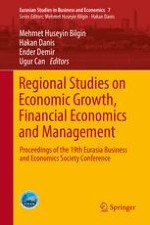2017 | Buch
Regional Studies on Economic Growth, Financial Economics and Management
Proceedings of the 19th Eurasia Business and Economics Society Conference
herausgegeben von: Mehmet Huseyin Bilgin, Hakan Danis, Ender Demir, Ugur Can
Verlag: Springer International Publishing
Buchreihe : Eurasian Studies in Business and Economics
